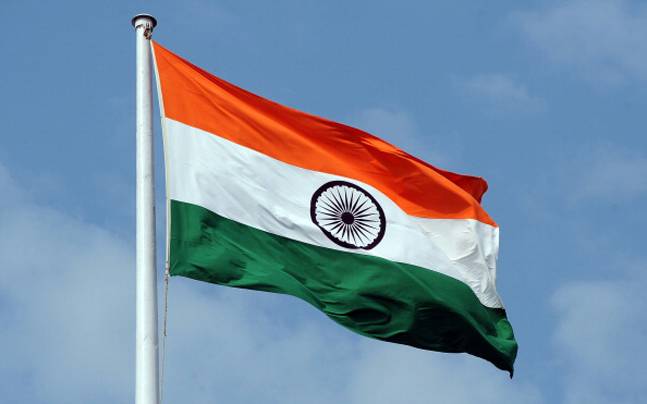The Repo rate is the rate at which banks can avail of short-term loans from the RBI, the lender of the last resort in our banking structure. It has remained unchanged at 6.5% since February 2023. This is despite consistent dissenting opinions from two external members, Prof Asima Goyal of PM’s Economic Advisory Council and Prof Jayant Varma of IIM (Ahmedabad), who have been pleading for a reduction of rate to spur economic growth and boost employment opportunity in every meeting. The majority viewpoint is spearheaded by Michael Patro, Deputy Governor RBI who has always taken an ostrich-like approach to containing imagined inflation looming around. The RBI governor makes a sanctimonious statement: “Any hasty action in a different direction will cause more harm than good”. Before we look at these contrasting perspectives, it would be in the fitness of things to look at the genesis of the Monetary Policy Committee (MPC) which was created, its contribution in guiding monetary policy, and the importance of taking dissent more seriously in a liberal democracy like ours.
The Genesis
The Repo rate was being decided by the RBI Governor with the advice of a Technical Advisory Committee before creation of the six-member MPC in which three are from within the RBI and three outside experts are from the field of economics, finance and statistics. The RBI used to take a multiple indicator approach, taking into account money, credit, output, trade, capital flows, interest rate, inflation, and exchange rate. However, it was the Committee on Finance Sector Reform (2009) headed by Dr Raghuram Rajan that the RBI would best serve the cause of growth by focusing on controlling inflation and intervening in the currency market only to limit excessive volatility. To the credit of Rajan, as Governor of RBI from 2013-2016, he, like Paul Volker, Chairman of USA Federal Reserve Bank, was instrumental in slaying the demon of inflation through tight money policy. It was his deputy Urjit Patel who suggested the constitution of MPC in place of the RBI Governor with multiple inputs from different stake holders to decide on Reporate. It also suggested Consumer Price Index (CPI) rather than Wholesale Price Index (WPI) to be the basis for public policy in containing inflation as food items constitute 50% weightage in CPI as against only 24% in WPI.
Working of the MPC (2016-2021)
The government has signed a MOU as per which it is the primary remit of the RBI to keep the inflation rate at 4% with a tolerance limit of 4% (+ – 2%). The MPC has therefore continued the hawkish approach of increasing Repo-rate as and when it sensed aheadwind of inflationor rising crude oil price during 2016-2019. To the credit of the MPC, the headline inflation stayed within the tolerance band of 4-6%. Of the 22 meetings held, consensuses were reached in 12. The dissenting voice was generally from outside an expert in the finance sector, who wanted a dovish approach to spur the market, credit creation and growth.
However, Covid 19 changed the policy dynamics when it struck unforeseen disruption in economic activity. Every country reduced its Repo-rate, with India’s MPC cutting it by 210 bps, China by 250 bps and USA by 225 bps. Fiscal stimulus was the name of the game and low cost of borrowing and waiver of collateral was considered a panacea to come out of the quagmire of slump in economic activity, particularly of MSMEs and the unorganized sector. The record of the RBI as an ally of the government, which was piloting fiscal stimulus during Covid19, was most edifying. The perceived silos that RBI will only be concerned with inflation control and the government with revival of growth was broken by unspoken camaraderie between two wheels of the economy’s chariot.
The MPC (2022-2024)
The story of MPC deliberation and decision since December 2022 has been roiled by a pitched battle between hawks and doves. The hawks worried by food inflation and the doves sniffing an opportunity for growth by cutting down the Repo rate. More so, since India is back to the normalcy level beforeCovid 19 and there is a need to boost employment generation by injecting fresh dozes of investment by promoting low-costshort-term credit by bringing down the repo rate.
The hawks believe that inflation in food prices is a matter of concern and therefore there is no case for withdrawal to graduate to an accommodative policy. On the other hand, Prof Ashima Goyal believes that the growth India is achieving now is below its potential. She observes that reducing unemployment is important and without productive employment, any attempt to redistribute wealth will provoke a flight of wealth. Besides a fall in CPI the real repo rate,i.e. the difference between Repo rate and CPI is above unity. Prof Jayant Varma of IIM (Ahmadabad) agrees with Asima and notes that the current real Repo rate of 2% (6.5% -4.5%) is well above the level needed to glide inflation to its target. He strongly asserts that the restrictive Repo rate policy since February 2023 for an unwarrantedly long time will lead to sacrifice growth in the coming fiscal year as well.
The Realty Check
Table 1 brings out the relationship between Repo rate, CPI, food inflation and GDP growth of India after every MPC meeting since December 2022. It would be seenthat the repo rate was hiked in February 2023 from 6.25 % in December 2022 by 25bps as the CPI had gone up to 10.5% and food inflation to 9.5%. This was justified.However, retaining the Repo rate at 6.5% in June 2023 when the CPI was down to 4.8%, food inflation at 4.5%, and growth at 8% was indefensible. Interestingly the CPI has remained around 4.1% to 5.2% until May 2024. The ostrich-like approach of the RBI governor and his cohorts in not budging from 6.5% is most unfortunate when the most pressing problem before the government is how to generate more employment and concomitantly a higher level of growth.
Table 1: Major Indicators (2022-2024)
| Indicators | Repo Rate | CPI | Food Inflation | GDP |
| Dec-22 | 6.25 | 10.5 | 9.53 | 8.4 |
| Feb-23 | 6.5 | 6.44 | 5.95 | 7.8 |
| Jun-23 | 6.5 | 4.81 | 4.5 | 8.2 |
| Sep-23 | 6.5 | 5.2 | 6.3 | 8.1 |
| Dec-23 | 6.5 | 4.1 | 8.7 | 10.1 |
| Mar-24 | 6.5 | 4.85 | 8.5 | 7.8 |
| May-24 | 6.5 | 4.75 | 8.69 | 8.4 |
Source: Compiled by Author (Repo Rate: RBI’s Monetary Policy statement, CPI: MOSPI, Food Inflation: Statistic & GDP Growth rate: MOSPI)
The above table clearly shows how food inflation has become the prime reason for the majority to hold the repo rate unchanged. As Prof Ashima Goyal observes -“The Repo rate cannot affect food prices. A positive real Repo rate is adequate to anchor inflation expectation.”Growth has been sacrificed on the altar of uncalled-for pessimism on the price front when it was traversing the glide path.
The Taylor Rule
It was John Taylor who in 1992 evolved a formula for arriving at a new rate. It had a nominal rate at which the apex bank would ideally like to lend short-term funds and potential and actual GDP and inflation in the country. The Taylor rule can be shown as under:
Proposed Rate = Nominal Rate +0.5(GDP p- GDP a) +0.5 (- Ip- I a); where GDP p is potential growth of the country, Ip is interest preferred and GDP a and Ia are actual GDP and inflation respectively. Alan Greenspan, the longest-serving Chairman of, US Federal Reserve Bank broadly followed the parameters and the rule. During the Chairmanship of Ben Bernanke, the scalpel of RBI was broadened to include growth along with inflation mitigation. If the Indian RBI had largely followed this formula the Repo rate in June 2024 would have been as under:
Desired Repo rate = 4+0.5 (10-7) + 0.5 (4- 5); ie 5.45% as against 6.5 %, 100 bps less than what was promulgated by the majority vote in June 2024
Concluding Thoughts
As the country looks forward to the full-fledged budget of the new NDA government, the major suggestions the FM has been receiving is to focus on employment generation and increase the capital expenditure allocation by 25% above the interim budget. Urjit Patel, the previous RBI governor had rightly observed: “We should aim at achieving the inflation target without losing sight of supporting economic growth.” This is precisely what Das is not doing in consort with complicit colleagues. The India Employment Report (2022) brings out how 7-8 million are added every year to the unemployed pool and how quality of jobs are extremely non remunerative in the informal sector which account for nearly 88% of the labor force. It’s high time RBI became an ally of the government in promoting growthand bolstering employment generation as it did during the pandemic years. Monetary policy has excellent brakes, but in a situation where it can stimulate growth through low-costcredit, it can also accelerate growth by eschewing a single-handed approach of inflation containment.





